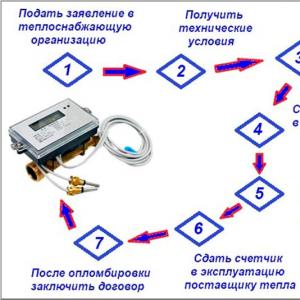French curtains. French curtains: how to sew with your own hands? French curtains in modern living rooms
It is very easy to give a room a zest, because the variety of modern decorative and functional elements allows you to implement any design solutions in your apartment or house. For example, French curtains are ideal for setting accents, protecting a room from bright light, making it more cozy and comfortable.
A bit of history
The French curtain or, as it is also called, the marquise, are several separate sections that have many lush folds of fabric falling down. Such curtains will allow you to decorate window openings with chic and luxury, because the folds of the fabric are distributed over the entire height of the canvases. By the way, these features are characteristic of awnings not by chance, because such curtains were invented in the era of classicism. As a result, they are distinguished by pomposity, underlined by luxury, and therefore you can safely design a living room in the style of royal apartments of the 18th century.

The photo shows French curtains in the classic interior of a spacious living room.
In those days, rooms for receiving guests and ceremonial halls were decorated with such curtains to give them even greater solemnity. These qualities were achieved through rich decoration with lace and ruffles, while today they have been replaced by transparent elastic fabrics that fit well into draperies. Moreover, they were popular both in huge palaces and in private interiors of aristocratic houses. Today, when designers often return to the traditions of the past and remind of retro style, French curtains can become a decorative element for apartments and country houses.
Device Features

Marquise is a series of elements that create a complete composition:
- The fabric itself. The more elastic it is, the more elegant the curtain will look. Making window openings with such curtains is more of a decorative than a practical process. Most often, multilayer window interiors are created on the basis of canvases, so the fabric must be chosen appropriately - light and giving splendor.
- Textile braid is a vertical decoration in the form of scallops and flounces. The more it is pulled together, the more folds there will be in the curtain.
- Balancing elements allow you to keep the curtain in a straight position so that it hangs beautifully.
- Additional decorations in the form of fringe, lace, beads or tassels can decorate the canvas at the bottom edges.
Mechanism and principle of operation

French curtains are easy-to-use fabrics that are decorated with airy flowing folds. In the lower part of the canvases, cords are pierced through rows of loops, which are pulled together to form scallops. The peculiarity of these products is that the folds are preserved along the entire length in any of its positions - raised or lowered. Curtains can be lifting or be in a static position. In the second case, it will be impossible to move them to the side or raise them. Static awnings are sewn from light translucent fabrics, such as chiffon, organza, and can be used as tulle.

The photo shows exquisite French curtains made of light translucent organza.
More common are lifting curtains that have a lifting rotor-chain mechanism: it is he who allows you to adjust the level of light entering the room. The canvases simply rise to the top of the window and are fixed with a special fixing element. If you lift the curtain up, more folds will form, and the curtains will look more magnificent in the form of beautiful clusters. The length of the canvases can be different - to the floor or only to the height of the window opening.

Assembly technology is a cascade, reminiscent of flowing water. Accordingly, the folds look picturesque, bright, beautiful, giving the room an aristocratic and romantic spirit. But it is worth remembering that this option is not the most convenient for opening windows, because it is unlikely that it will be possible to fully raise the curtains.
Fabrics and patterns: what to choose?

The awning is sewn from silk, polyester and translucent tulle, cambric, wool, moire, satin, muslin are often used. The main requirement is that the curtains be translucent in light pastel shades. Thanks to this combination, the curtains look harmonious both as an independent attribute of the room, and in combination with curtains and lambrequins.

The illusion of volume is achieved through the use of frills, ruffles and ribbons, which also create an atmosphere of comfort and elegance. All these decorations are ideal for rooms decorated in the classical or Empire style, baroque or neoclassical.

These curtains are ideal for living room decor or where they will look stylish, appropriate, presentable, but they are luxurious. When choosing curtains for individual rooms, pay attention to the choice of fabric.
If you want to decorate the interior of the kitchen with luxurious, but at the same time light and practical curtains, pay attention to the models of French curtains. They are a single piece of fabric, the length of which can be adjusted at your discretion by folding the fabric with lush scalloped folds using a vertical braid. Having chosen French curtains for the kitchen, they can be used both independently and in an ensemble with other curtains. But in any case, they look elegant, stylish and give the atmosphere of the room a truly Parisian charm and a bit of palatial pomposity.
Curtains with lush scallops were invented to decorate the interiors of banquet halls and bedrooms of the French nobility (which is why their second name is “marquise”), then spectacular textiles began to be used to decorate theater scenes. And today, almost three centuries later, French curtains are still associated with wealth and success, and can decorate the windows of any room in our house - from the interior of a romantic bedroom to a cozy kitchen.
Light and airy French-style draperies
5 reasons to hang French curtains in the kitchen:
- Short draperies do not block access to the window and window sill, but thanks to spectacular scallops, they look much more respectable than Roman or roll designs.
- They go well with other types of window textiles - curtains, lambrequins.

A short curtain in a duet with a luxurious lambrequin fits perfectly into the interior of the kitchen
- The number and splendor of the folds can be varied at your discretion, so the "French" looks great both on a small narrow window and on a wide opening.
- Thanks to the lush folds, the French curtain closes the room well from prying eyes, so it can be used even in the kitchen on the ground floor without blinds or thick curtains.
- Such a curtain will be an ideal addition for both expensive historical interiors (classic, baroque, renaissance, empire), and for kitchens decorated in the spirit of a cozy country, romantic Provence or elegant English style.

Lush scallops in a classic kitchen interior
On a note! Many people confuse Austrian and French curtains, because the models are really similar in the form of folds, the lifting principle and a solid canvas. The difference is that French curtains have scallops all the way down and do not fully unfurl even when the curtain is down. And the Austrian ones form folds only in the lower part of the canvas.

Varieties of lifting curtains
Choosing fabric for curtains
French curtains for the kitchen can be of any length - both practical short curtains to the windowsill, and lush drapery "to the floor". There are no special restrictions in the choice of textiles. The material can be airy or quite dense, the difference is in the form of folds (the heavier the canvas, the more clearly the arcs will be expressed). Dense soft tissues will fall in smooth "waves", and the lungs will help form lush "clouds".

Colored transparent textures perfectly scatter light
The most popular types of fabrics:
- Translucent - veil, organza, muslin, silk, cambric, chiffon, tulle, polyester with various additives.
- Opaque - satin, cotton, linen, jacquard.


Plain textile with multi-coloured braid
As for colors, curtains can be any color of the rainbow, although white and other neutral tones are usually preferred. But textiles with a pattern are used infrequently, because when the curtain is raised, the beauty of the pattern can be lost in the folds. But if you really want to revive the interior of the kitchen with a colorful print, use light-colored fabric with a repeating colorful ornament (peas, cage, flowers).

Floral motifs in the interior of the kitchen

For sewing, you can use plain fabrics of different colors.
On a note! To finish the lower edge of the curtains, you can use lush ruffles, a fringe of gilded threads or glass beads, a spectacular border of bright color. The choice of decor depends on the density of the material and the style in which the interior of the kitchen is decorated.
Systems for scalloping
A distinctive feature of French curtains is a cascade of even arched scallops. In the classic version, curtains are mounted on profile cornices, which allows you to form more lush and expressive folds. In the modern interpretation, the canvas is attached only to the upper holder with special Velcro, like other lifting models.
Types of lifting mechanisms for French curtains:
- Manual - curtains are raised using a system of several cords and rings.

- Automatic - just flip a switch or press a button on the remote control to activate the roller, which will rotate and adjust the curtain to the desired height on its own.
The working principle of the automatic lift
On a note! The simplest design of "Frenchwomen" can also be static - that is, the folds will be fixed in one position without a lifting mechanism. For short curtains for the kitchen, this can be a good and very economical solution. .
We sew French curtains with our own hands
Ready-made models with lush scallops are quite expensive, but if you have a sewing machine and a desire to create a unique window decor in the kitchen, you can sew French curtains yourself. Despite the apparent complexity of the design, such work is quite feasible even for a novice seamstress. Therefore, we will consider in detail all the nuances of the upcoming work - from window measurements to the manufacture of the product itself.
Material calculation
The key to success in tailoring any curtains is the correct measurements. Therefore, we arm ourselves with a tape measure and go to the kitchen window.
We are interested in four main parameters:
- The length of the cornice, to which a margin of 1.3-1.5 should be added, in order to beautifully drape the opening with fabric and leave an allowance for the seams.
- The height of the future curtain, which is measured from the eaves to the window sill or the middle of the window (however, if we are talking about a kitchen-dining room with a large opening, you can sew a curtain up to the floor).
- Assembly coefficient - depends on the type of textile, splendor and bending of the folds. For dense material, you need to multiply the length of the curtain by 1.8-2, for light tulle, chiffon or veil - at least 2.5.
- The number of stripes with scallops - the length of the cornice should be divided into 4-5 equal segments (or more - depending on the size of the window).
An example of calculating the fabric for a French curtain in the kitchen:
Given: a standard window with a two-meter cornice, the length of the curtain is up to the window sill (175 cm).
Determine the width: multiply the length of the cornice by 1.5. Total: 2 m * 1.5 = 3 meters.
We determine the height: we multiply the length to the window sill by 2.5 (assembly factor for lush scallops). Total: 1.75 m * 2.5 = 4.375 m (including allowances - 4.4 m).
To form 8 rows of scallops on the curtain, the fabric will have to be cut into canvases. But if you manage to find the right material in a narrow roll, 80 cm wide, it will be ideal for a beginner seamstress. According to our calculations, such matter will need 17.6 meters (4.4 m * 4 canvases) with a width of each row of folds of 35-40 cm.

Material calculation scheme depending on the number of scallops
In addition to the fabric, you will need a curtain rod for attaching curtains, rings and a skein of nylon cord - all this can be bought at a sewing accessories store. And, of course, you can’t do without a set of home craftswomen - a sewing machine, scissors, thread, needles / pins and a measuring ruler with chalk for marking.
Tailoring technology
To get a spectacular curtain with lush folds, it is important not only to correctly calculate the amount of material, but also to provide tucks in the right places of the drapery, and even to properly fix the rings for the lifting mechanism. In order not to miss any of the upcoming stages of work, we suggest using our hint.
Step-by-step instructions for sewing French curtains with your own hands:
- Sew the pieces of fabric together to obtain the desired width of the curtain.
- Lay the resulting whole canvas on a table or other flat surface.
- Make a markup, indicating with chalk the location of the center lines of the scallops, taking into account the seam allowances (at the bottom and on the side - 5 cm each, and on top - along the width of the curtain tape or Velcro).
- Finish the bottom and sides by folding the fabric twice and secure the fold with a straight stitch.
Advice! For convenience, you can first baste the seams by hand or pin them with pins, and then iron them with an iron.
- Now it remains to form the scallops. To do this, from the sides, along the seams that fastened the strips and along the markings of the center of the scallops, it is necessary to lay a French (or linen) seam, with large stitches through which you can pass the gathering cord. "marquise" tape) and attach to the wrong side of the product with a regular stitch.
On a note! For a curtain under a two-meter cornice from our example, consisting of four sheets of fabric, you will need 9 seams and 9 cord cuts of 175 cm each.
- Then we take a pin, pass the cords through the seam loops and collect the curtain with beautiful folds. After that, you need to tighten each end and sew to the bottom of the curtain. To get beautiful folds, you can make small tucks in the center of each row of scallops or limit yourself to only the first row from the top, allowing the rest to form arbitrary “waves”.

Pattern for sewing French curtains with your own hands
- On the upper edge we make a bend, then we attach a mount to it - a curtain tape or one of the sides of the pile. After that, we adjust the width of the product according to the size of the eaves.
At this stage, you can finish the assembly - the curtain is ready. It remains to smooth the fabric, attach it to the hooks of the cornice or combine the sides of the fluff tape on the mounting plate. But if you want a movable rather than a static curtain, you will have to work a little more.
Installation of the lifting mechanism
In order for the curtain to be adjustable in height, you will need small rings that are sewn at the bottom of the curtain along each edge of the French seam. So that the fasteners are not visible from the front side, it is necessary to make indents - at least 5 cm from the bottom, and 12-15 cm from the top. Also, the rings must be attached on the sides and the seam of the towel in steps of 15-30 cm.
Important! The step depends on the size of the scallops. For small and narrow “waves”, smaller indents are needed, for deep or wide ones, larger ones.

At the bottom of each gathering tape, it is recommended to hang small weights that will evenly hold the fabric in a vertical position (for light curtains, you can use heavy brushes, a fringe of beads, decorative stones or glass beads). After that, it remains to thread the cuts of the nylon cord through all the rings.
It is done like this:
- The first segment is wound into a ring located in the lower left edge of the curtain, passed through all the rings sewn along the side seam, passes through the cornice and is displayed on the right side.
On a note! The length of the cord will consist of the sum of the two lengths of the curtain and the length of the cornice (in our example (175 * 2) + 200 = 550 cm).
- The second cord is tied to the next lower ring, also runs vertically, then along the cornice and leads out to the right.

- All other cords are drawn in the same way, after which their free ends on the right side of the curtain are woven into a beautiful pigtail and fixed on a hook. This will be the control system that will allow you to raise and lower the curtain to the desired height.
Advice! The lengthy process of sewing on rings can be simplified and accelerated if you buy a ready-made "marquise" tape with rings already sewn on.

Ready-made braid for lifting French curtains
Video: step by step master class
Methods for fastening French curtains
Like any lifting curtains, French models can be mounted directly on the window frame with adhesive tape, hung on the eaves by hooks and even directly on the rod (if the curtain tape loops are wide enough). But, unlike roll and Roman designs, lush scallops require free space. Therefore, it is not necessary to fasten French curtains immediately to plastic windows, but, as shown in the photo, to a bar along the edge of a window opening or to a cornice.


Types of holders for French curtains:
- A strip equipped with adhesive tape is an excellent budget option for static curtains. Models may differ in the type of fasteners for wall and ceiling mounting.

Ready-made cornice with Velcro and wall fixing system
- Special cornice for lifting curtains - has small loops, hooks, a recess or a cavity for lacing, which adjusts the height of the curtain. Such a holder is very convenient for DIY models - you don’t have to invent a way to mask and evenly place the cords on top of the curtain.
- A pull-up curtain rod is a ready-made solution for French blinds, already equipped with a system of cords that you just need to pass through the rings and an adjustment chain.

Fastening for French curtains on the eaves with a chain system:

Fastening for French curtains on the eaves

On a note! You can replace the finished cornice with a cut of a metal profile or a wooden beam, on which one of the strips of the fleece tape should be glued or nailed with small nails (the second part is sewn to the curtain). Additionally, such a home-made holder is wrapped in a cloth or painted in the color of the walls or curtains.

French curtains in the interior of the kitchen are a great alternative to the usual tulle and a real decoration for the kitchen window. And what is important - despite all the sophistication and visual complexity of the design, they are quite easy to sew with your own hands from any suitable material. But if you are not fond of needlework or simply did not have time to get a sewing machine, it does not matter. Such a model can be sewn in any studio, providing professional seamstresses with measurements of your window and the fabric you like.
Photo selection of kitchen interiors with French curtains
It is difficult to overestimate the importance of French curtains in creating a beautiful interior design. They represent the best combination of simplicity and sophistication, which, in fact, attracts the attention of a large number of consumers. Such products differ from analogues in lush draperies, which are formed along the entire length of the fabric due to even scallops. Due to such an elegant appearance, French curtains have found application not only in houses and apartments, but also in public interiors, giving solemnity and comfort to each room.
The history of French curtains
The first mention of French curtains comes at the beginning of the 18th century. They began to be made to decorate the royal baroque. Later they found application in classicism. They were made from thin fabrics, mainly from silk. In large rooms, the windows were covered with light French curtains. In houses, it was preferable to use thick silk curtains.
Modern collections of French curtains 2015-2016
The current French curtains are distinguished by the content of modern dense fabrics of various tones. The latest collections attract with the presence of hard lush folds, made in pastel colors. Also, a new trend involves the use of polyester, which is not inferior in its softness even to silk. In addition, this material is very practical and does not lose its properties during washing. Such curtains are great for transforming not only the interiors of banquet halls, but also stylish apartments. Due to the wide abundance of textures and colors, modern collections of small curtains can even be used in small rooms. Light French curtains allow you to visually increase the space of the window and give the room a unique look.
French curtains on original fabrics from Europe

Salon curtains ArtService offers everyone a wide range of amazing French curtains for every taste. In our company, you can save a lot, as we cooperate directly with fabric manufacturers. In addition, we are not chasing large fees, because we are interested in a wide audience of potential customers. Also, the quality of products should be attributed to the advantages of purchasing French curtains from us. We employ only experienced professionals who are ready to take on even the most complex order. Individual curtains will allow you to more effectively decorate any room, giving it a solemn atmosphere. In the production of our products, we use only high quality products. At the same time, the company does not stop there, but continues to develop its production facilities, regularly adding new French curtains to the collections.
In ArtService you can buy French curtains for:
- Bedrooms;
- Hall;
- Hall;
- Kitchens;
French curtains to order are 2-3 times cheaper than our competitors for the reasons already mentioned above. At the same time, they are distinguished by even greater sophistication and beauty. Such products will be a great decoration for any room in the house or apartment. At the same time, they will be able to give each office more solidity.
The range of finished products includes unique French curtains with curtains for bedrooms. These curtains are great for decorating windows in bedrooms, giving the room ease and romance. If desired, we can transform the finished collections with various accessories such as brushes and pelmets. Such solutions look very interesting on arched windows.
We offer a warranty on all of our products. If you have doubts about the quality or appearance of the goods, you can return them and get your money back.
The most profitable offers!
The ArtService company constantly holds promotions and provides discounts on the remaining types of fabrics, accessories and other items. You can take advantage of one of the hot offers of the company and we will offer curtains with a significant discount.
Recently, French curtains can most often be seen in kitchens, although they are also chosen for halls and halls. It is worth dwelling in more detail on how the models from France differ from all the others.

Features, advantages and disadvantages
Many people wonder what it is - French curtains. It is not for nothing that the luxurious decorations of Renaissance palaces immediately come to mind. Indeed, French curtains look pompous and solemn. The French curtain is a canvas gathered in folds, due to which beautiful draperies are formed. Depending on the model, such curtains can either be pulled up or left in a static position. Difficulties are the care of such curtains. They are difficult to clean, as dust collects in the folds and eats into the fabric. And also the disadvantage is the huge consumption of fabric, due to which such a model is heavier than analogues, for example, Roman blinds.

Varieties
There are a huge number of varieties of French curtains. They are subdivided according to length, type of braid, fabric density. However, the most important division is according to the way the curtains are attached. They are divided into two varieties.
- Stationary. This refers to a model that cannot be folded or raised by pulling the braid. Such curtains are more suitable for rooms in which natural light is not welcome. And also this option is good for kitchens on the first floors, as it reliably protects the room from prying eyes. Blind curtains can be of various lengths, but most often either models are chosen to the floor or to the middle of the window. In the second case, an optimal ratio is achieved between the amount of light transmitted and the privacy of the situation. For the kitchen, the second option is usually used, sewn from tulle or other light fabric.

- Folding. The awning curtain is often equipped with a mechanism that allows you to pull it up at your discretion. It's all about the frame system, so it's almost impossible to make folding French curtains on your own. It is better to immediately purchase a ready-made version. If the French curtain is made of thick curtain fabric, then it is advisable to equip it with an automatic lifting mechanism. This will greatly simplify operation.

When choosing which curtain to hang - deaf or folding, you should focus on the practicality of the chosen option. If you need to open the window from time to time, it is advisable to hang a folding curtain. If it is not necessary to open the window at all, then the stationary option is more rational.
Fabrics and colors
If earlier French curtains were sewn only from expensive elite fabrics, today the choice is huge. Curtains are made from both natural and artificial materials, they can be both light and dense. They also differ in price. Technologies are such that even not the most expensive fabric can perfectly repel dust and at the same time look attractive. Depending on the room, both translucent flying materials and dense fabrics for curtains can be used. The main condition is sufficient elasticity of the fabric, otherwise it will not work to create characteristic scallops. By the way, you should not take models for French curtains that have folds only at the bottom. The name of such curtains is Austrian curtains.

To date, the following materials are most often used:
- tulle;
- organza;
- silk;
- batiste;
- wool;
- taffeta;
- velvet.

As for color, traditionally French curtains are made in pastel colors: white, ivory, beige. This statement is true for thick curtains, and for tulle models. An interesting solution is bright French curtains. Burgundy and emerald colors are perfect for heavy curtains. Sunny yellow is the color of choice for kitchens. Blue or pink can be used both in the kitchen and in the nursery, provided that the curtains are made of flying materials.

Color combination may vary. Often, French curtains are complemented by lambrequins, which can be made from the same fabric as the main canvas, but in a different color scheme. For example, the following combinations are common:
- white + beige;
- yellow + gold;
- white + blue.



We select the style of the rooms
French curtains can be successfully fitted into almost any interior, including such devoid of sophistication options as country or rustic. Much depends on the length of the curtains, their type, as well as on the design features. For example, it is much more appropriate to choose medium-length deaf curtains made of catchy chintz fabric for a country-style kitchen, rather than heavy velvet floor-length curtains. First you need to decide for which room French curtains are selected. Options for the kitchen and for the bedroom will vary. If for the kitchen, first of all, you need to pay attention to the functionality of the material, then in the bedroom you can pick up curtains of their more branded, but pleasant to the touch fabric. It is also important to pay attention to whether the material is hypoallergenic, especially when buying French curtains for a nursery.




Currently, French curtains are most often chosen specifically for the kitchen, so it makes sense to consider in detail the three most popular directions in which these rooms are furnished. So, you can often see modern dining areas furnished in a classic or rustic style. All three options are universal, that is, they are suitable for decorating both large kitchens and small ones. Curtains are selected depending on financial capabilities.

Modern
It would seem that buying French curtains for a modern interior is not entirely appropriate, but in reality everything turns out to be wrong. Depending on the fabric and the length of the curtains themselves, they may look less elaborate and sophisticated than usual. A good option is natural fabrics, such as linen. Linen curtains do not get dirty, but the fabric drapes well. A wide range of colors and patterns will allow you to choose the right model for each specific interior. The only downside is the price. Linen is an expensive fabric, especially with all sorts of additives that make it easier to care for.




And also in modern interiors you can often see tulle curtains just below the window sill or up to the middle of the window. There are some advantages to choosing this option. For example, you can not worry that the room will be too dark. Tulle transmits light well, while protecting the room from prying eyes. True, complete privacy cannot be achieved with the help of such curtains.

In any case, for a modern interior, it is worth choosing the most simple options without a lot of decor. For example, you do not need to look for curtains with lambrequins. It will be enough to have one braid around the edge, although most often you can do without it. And also the fabric should be with a simple elegant decor, without cheap shine and overflow.
Classical
French-style curtains look most harmonious in classic interiors. This also includes a more elaborate baroque style, which differs from the classics by the presence of a huge amount of gilding, intricate details in the decoration and similar excesses. Accordingly, French curtains must fully meet the requirements of the style.
- You need to pay attention to the fabric. The most commonly used combined curtains. On the one hand, French curtains can be made from tulle, and thick ordinary curtains can be hung on top. On the other hand, French curtains made of dense fabric, such as brocade or velvet, will also look appropriate, especially if there is additional decor: fringe, trim, and the like.
- Colors can be any, but monochromatic deep colors are most often chosen: green, burgundy, blue. For a more modest setting, gray curtains with a silver jacquard pattern will look good.
- Be sure to have lambrequins and other additional elements. Only with sufficient pomposity will French curtains look truly elegant and solemn.




Important! This option is not suitable for the kitchen. If the kitchen area is decorated in a classic style, it is better to choose a different type of curtains.
Country
It would seem that there is nothing more strange than French curtains in a rustic room. In reality, things are a little different. Such curtains, made of light bright fabric with a pattern, look quite appropriate and even emphasize the deliberate simplicity of the interior. The main thing is to choose the right length, colors and material. First of all, it is worth mentioning that the French curtain in the country room should not fall below the middle of the window, because it is the ajar window that will make the curtains less formal. If the window faces the sunny side and you want to lower the curtains from time to time, then you should choose a folding option. So, if necessary, you can cover the curtains, and after the sun disappears, return the room to its original appearance.


Almost any materials will do, but it is important that they are not luxurious. Chintz fits well. But you should not make French curtains from tulle, except to choose a mesh version with embroidery. Any fabric should look like it was handmade, so the patchwork style is welcome. As for the colors, bright colors and combinations will look good. Checkered curtains are a classic of the genre, especially when it comes to the kitchen window. And also curtains with print a la appliqué and painted for patchwork will look good.
In our design studio NAMANI you can always place an order for tailoring French curtains. We will be happy to help you choose the right option. Our design studio guarantees you the quality, practicality and attractive appearance of our products in a short time and.
About the history of French curtains
In the 17th century, during the reign of King Louis XIV, tailoring French curtains quickly became fashionable and does not lose relevance to the present. Since then, Ludovik's curtains have been filling the rooms with the atmosphere of a holiday, celebration and conveying the spirit of the times. In almost all expensive restaurants, theaters, concert and luxurious banquet halls, in marriage palaces, palaces of culture and respectable offices of numerous government agencies, you can see snow-white tulles, with folds skillfully laid by the master's hand.
Features of French curtains
 Airy, refined and elegant decors for windows are an undoubted decoration of classic interiors. However, certain models of awnings (as French curtains are also called) will quite successfully fit into the modern design. Along with the Roman and Austrian curtains, they are classified as lifting curtains, but there are also static variations on the “marquis” theme. Move the structure using a manual mechanism or an electric drive.
Airy, refined and elegant decors for windows are an undoubted decoration of classic interiors. However, certain models of awnings (as French curtains are also called) will quite successfully fit into the modern design. Along with the Roman and Austrian curtains, they are classified as lifting curtains, but there are also static variations on the “marquis” theme. Move the structure using a manual mechanism or an electric drive.
The main feature of the French curtain is a lot of lush draperies formed by even semicircular folds of fabric, which are usually laid along the entire height of the canvas. The more folds (scallops), the richer and more elegant the curtain. When the curtains are raised to let in the sunlight, the scallops gather into luxurious clusters. If the curtains are lowered, the folds turn into touching ruffles, clearly demonstrating the high quality of tailoring and the quality factor of the fabric.
French curtain fabrics
 Currently, they are made from various types of fabric, which are distinguished by lightness and thinness, among which batiste, silk and many others should be listed. Delicate pastel colors are also made, the most common of which is white.
Currently, they are made from various types of fabric, which are distinguished by lightness and thinness, among which batiste, silk and many others should be listed. Delicate pastel colors are also made, the most common of which is white.
Often made of transparent tulle of various colors and shades. Dense silk, which has an overflow inherent in satin, is used for sewing classic French curtains. Possible use in manufacturing French curtains veils, as well as organza. But it should be remembered that for sewing French curtains, the preferred fabrics are elastic fabrics, the draperies of which fall in soft, smooth folds, forming excellent, voluminous scallops.
French curtain colors
As for colors, their choice depends on the preferences of the customer and the taste of the designer. Pastel-colored fabrics are usually used, darker shades of fabrics will be appropriate in south-facing rooms, as well as in spacious bright rooms with high ceilings.








